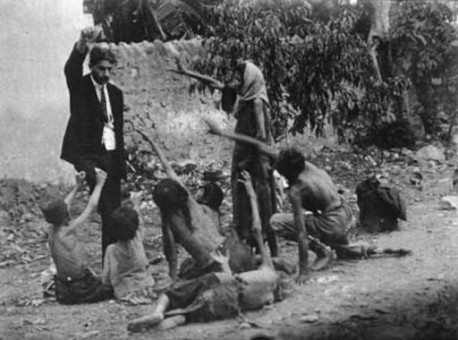Turkish language courses gaining popularity in Sidon
By Mohammed Zaatari

SIDON: More than 100 students in the southern coastal city of Sidon have registered for Turkish language classes aimed at fostering economic and social relations between the two countries.
“It is useful to learn Turkish, and its importance has grown since the Gaza-bound Turkish flotilla, carrying aid, was targeted by an Israeli raid in May of last year,” said Allaa al-Saleh, a television anchor who recently enrolled in the course.
“Many Turks have been learning Arabic for Palestine, and for their love to our country; we will learn Turkish,” said Saleh.
Words like “Tashakkurat” (much thanks), are being exchanged between Turkish instructors and their Lebanese and Palestinians students, who conjugate verbs in one of the halls of the House for Orphans Care in Sidon, where lessons take place.
Saleh registered for this year’s session after hearing about the language course through an online advertisement. He claims his interest in the language comes from the many cultural and religious factors that bring the Turks and Arabs together.
“History, culture, religion and the recent Turkish stances toward Palestine, amid the negligence of Arab countries [have spurred me to take lessons],” Saleh added.
Lebanon and Turkey have a long history of enmity, sowed during the Ottoman era, which saw Lebanon dominated by the Turks for centuries. The semiautonomous Mount Lebanon was treated harshly at the height of World War I, when the Lebanese struggle for liberation was crushed after Jamal Pasha was appointed the sole Turkish commander-in-chief in the region.
Despite the oppression and famine caused by Ottoman policies (sic.) in Lebanon, common legal, economic and cultural connections have remained long after the Ottomans withdrew following the end of World War I.
Both the Turkish efforts to send ship aid to the Gaza strip and the firm anti-Israeli stance of Turkish Prime Minister Recep Tayyip Erdogan, in power since 2009, have yielded widespread Arab and Lebanese praise for the Turkish leadership.
Another student Randa Dahsha related her interest in the language classes to her husband’s job which allows the pair to occasionally travel to Turkey. “My husband is a businessman; we go to Turkey several times a year and I always fit in with the people there,” said Dahsha.
According to Dahsha the Turkish language, although harsher in tone, has many similarities with Arabic.
“There is common vocabulary with the Arabic language, so why not learn it,” she added.
Dahsha was lucky and registered in time for the course, but many other interested students were denied a place this term because of high demand, course operators said.
Administrator accepted only 100 students for this session. “We have already started to register students for the second session which would start in June,” said the president of House for Orphans Care, Saeed Makkawi.
All walks of life including engineers, teachers and businessmen are among the students, who attend two three-hour classes a week
“For many people in Lebanon and especially in Sidon, Turkey has become a trade and tourism hub,” said Dahsha.
www.dailystar.com.lb, February 14, 2011





